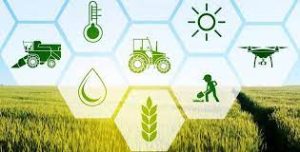30 Jul 2022 Eleventh Agricultural Census (2021-22)

- Recently the Ministry of Agriculture and Farmers Welfare launched the “Eleventh Agriculture Census (2021-22).”
- This calculation will benefit a huge and agricultural country like India in a big way.
Agricultural Census:
- Agriculture Census is conducted every 5 years, which is being delayed this time due to the COVID-19 pandemic.
- The entire census is conducted in three phases and the operational ownership for data collection is viewed as a statistical unit at the micro level.
- Based on the Agriculture Census data collected in three phases, the department presents three detailed reports analyzing trends on various parameters at all India and State/UT level.
- District/Tehsil level reports are prepared by the respective States/UTs.
- Agriculture Census is the main source of information on various agricultural parameters at a relatively small scale, such as the number and area of operational holdings, their size, class-wise distribution, land use, tenancy and cropping patterns etc.
Eleventh Census:
- Agriculture census work will start in August 2022.
- This is the first time that the data collection for the Agriculture Census will be done on smartphones and tablets, so that the data is available in a timely manner.
This includes:
- Access to digital land records such as land title records and survey reports.
- Collection of data through app/software using smartphone/tablet.
- Enumeration of all villages in non-land record states during Phase-I as done in land record states.
- Real time monitoring of progress and processing.
- Most of the states have digitized their land records and surveys, which will further accelerate the collection of agricultural census data.
- A database of operational holdings in the country will be created using a mobile app for data collection and use of digital land records.
Digital Agriculture:
- Digital agriculture is an information and communication technology (ICT) and data ecosystem that supports the development and delivery of timely targeted information and services to make farming profitable, sustainable while providing safe, nutritious and affordable food for all.
Example:
- Biotechnology agriculture is a range of equipment, including traditional breeding techniques that modify living organisms, or parts of organisms, to create or modify products; it involves the improvement of plants or animals or the development of microorganisms for specific agricultural uses.
- Precision farming (PA) is an approach where precise amounts of agricultural outputs are used to achieve increased average yield as compared to traditional farming techniques like agro-forestry, inter-cropping, crop rotation, etc. It is based on using digital agriculture information and communication technology.
- Digital and wireless technologies for data measurement, weather monitoring, robotics/drone technology etc.
The gain:
Agricultural Machinery Automation:
- It allows the inputs to be fixed and reduces the demand for manual labour.
Remote Satellite Data:
- Remote satellite data and in-situ sensors improve accuracy and reduce the cost of monitoring crop growth and land or water quality.
- Freely available and high quality satellite imagery dramatically reduces the cost of monitoring many agricultural activities. This could allow governments to move towards more targeted policies that pay (or penalize) farmers based on environmental consequences.
Traceability Technologies and Digital Logistics:
- These services provide the ability to streamline the agri-food supply chain while providing consumers with reliable information.
Administrative Objectives:
- In addition to monitoring compliance with environmental policies, digital technologies enable the automation of administrative processes for agriculture and the development of extended government services in relation to extension or advisory services.
Maintenance of Land Records:
- Using technology, a large number of holding data can be suitably tagged and digitized.
- This will not only help in better targeting but will also reduce the number of litigation for land disputes in the courts.
Government Initiatives for Digital Agriculture:
Agristack:
- The Ministry of Agriculture and Farmers Welfare has planned the creation of ‘AgriStack’, which is a collection of technology based interventions in agriculture. It will create an integrated platform to provide end to end services to the farmers in the agri-food value chain.
Digital Agriculture Mission:
- This initiative has been started by the government from the year 2021 to 2025 to promote projects based on new technologies like artificial intelligence, block chain, remote sensing and GIS technology, use of drones and robots in the agriculture sector.
Integrated Farmer Service Platform (UFSP):
- It is a combination of core infrastructure, data, applications and tools that enables seamless interoperability of various public and private IT systems in the agriculture ecosystem across the country.
UFSP performs the following roles:
- It acts as a central agency in the agriculture ecosystem (like UPI in e-payments).
- Enables registration of service providers (public and private) and farmer services.
- Enforces various rules and assumptions required during the service delivery process.
- Serves as a repository of all applicable standards, Application Programming Interface (API) and formats.
- To act as a medium of data exchange between various schemes and services to ensure the delivery of services to the farmers at a wider level.
National e-Governance Plan in Agriculture (NeGP-A):
- It is a centrally sponsored scheme, the scheme was launched in the year 2010-11 on a pilot basis in 7 states. Its objective is to promote rapid development in India through the use of Information and Communication Technology (ICT) for timely access to agricultural information to farmers.
- In the year 2014-15, the scheme was extended to all remaining states and 2 union territories.
- Other digital initiatives: Kisan Call Centre, Kisan Suvidha App, Krishi Bazaar App, Soil Health Card (SHC) Portal etc.


No Comments